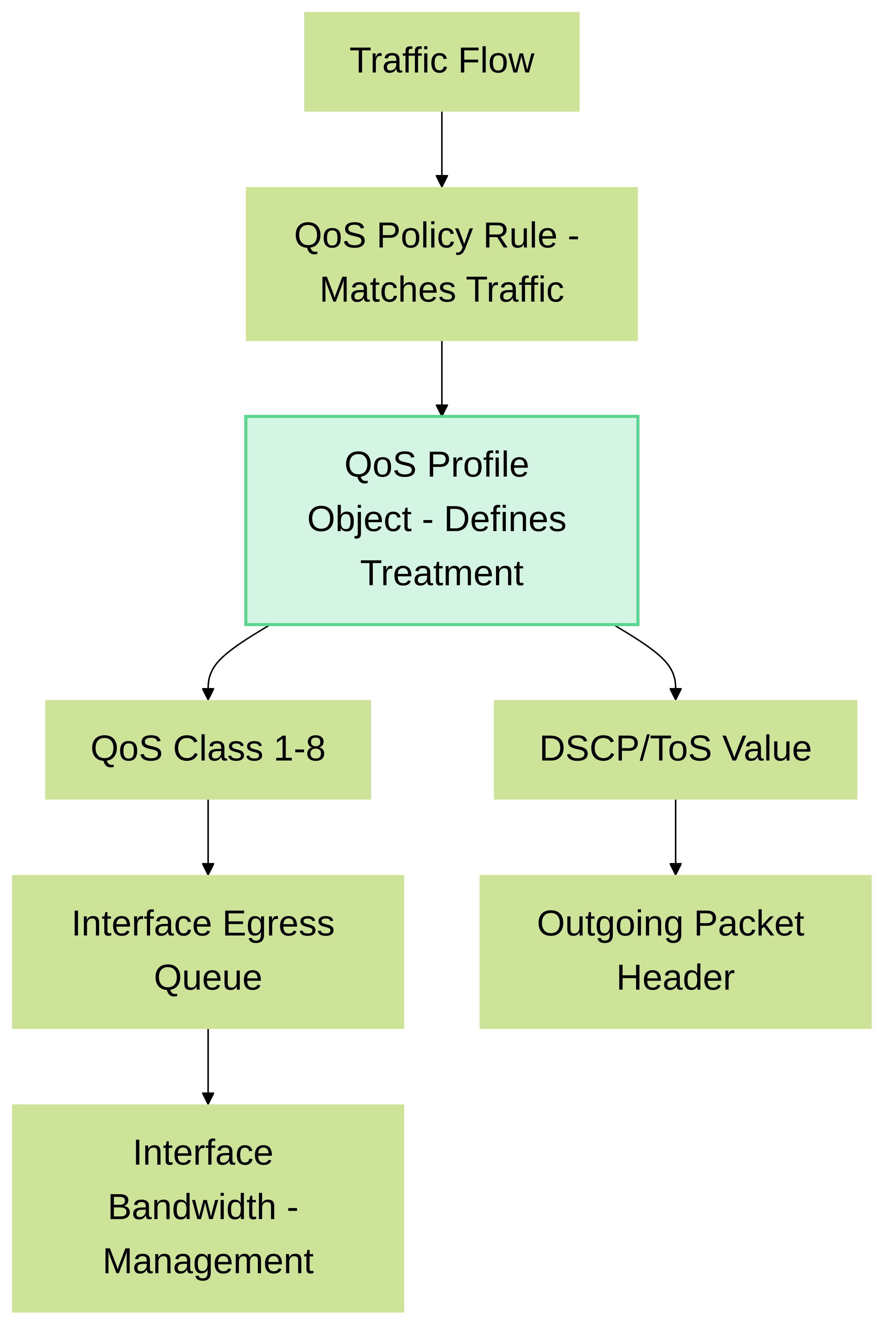The QoS Profile is a crucial link between identifying traffic and applying QoS treatment:
-
Traffic Matches QoS Policy Rule:
The firewall evaluates traffic against QoS Policy rules (
Policies > QoS). - Policy Applies QoS Profile: The matched QoS Policy rule's action specifies which QoS Profile object to apply.
-
Profile Assigns Class & Remarks:
The applied QoS Profile object dictates:
- Which QoS Class (1-8) the traffic belongs to.
- (Optionally) What DSCP/ToS value the outgoing packet should have.
-
Interface Applies Bandwidth Management:
The traffic, now tagged with a QoS Class, is placed in the corresponding queue on the egress interface. The interface's QoS settings (configured under
Network > Interfaces > [Interface] > QoS) enforce the guaranteed/maximum bandwidth limits for that class.
 Diagram showing the role of the QoS Profile Object.
Diagram showing the role of the QoS Profile Object.
Remember the Distinction: The QoS Profile object assigns the Class; the Interface QoS settings enforce the bandwidth rules *for* that Class on that specific interface.